What’s Up?
The weather forecast for La Jolla was rain till 10:30am. We enjoyed our first clear blue sky sunrise. There were lots of pelicans but, with the weekend, probably more photographers. But it was the groups first chance on the pelicans with early morning sun on them and we had some gorgeous birds. I made one of my all time favorite tight preening pelican bill images ever. The bird had the reddest bill you could imagine and the image design and sharpness were right-on. I will share it with you here soon.
With my insane recent travel schedule–can you say 10 1/2 weeks in South America?, the San Diego IPT, an upcoming visit to my Mom on Long Island, and the Japan IPT, I regret that I will not be able to complete the FocusTune/LensAlign Micro Adjustment Tutorial until I get back from Japan in early March. But I like to do things right and do not want to send out something done half-heartedly. I firmly believe that if you are gonna do something you might as well do it right.
Some great news: three folks have already up signed up for the DEC 2018/JAN 2019 Falklands Land-based IPT so there are just four spots left. Learn more here.
Gear Questions and Advice
Too many folks attending BAA IPTs and dozens of folks whom I see in the field, and on BPN, are–out of ignorance–using the wrong gear, especially when it comes to tripods and more especially, tripod heads… Please know that I am always glad to answer your gear questions via e-mail.
The Streak: 429!
Today’s blog post marks a totally insane, irrational, illogical, preposterous, absurd, completely ridiculous, unfathomable, silly, incomprehensible, what’s wrong with this guy?, makes-no-sense, 429 days in a row with a new educational blog post. As always–and folks have been doing a really great job recently–please remember to use our B&H links for your major gear purchases. For best results use one of our many product-specific links; after clicking on one of those you can continue shopping with all subsequent purchases invisibly tracked to BAA. Your doing so is always greatly appreciated. Please remember: web orders only. And please remember also that if you are shopping for items that we carry in the new BAA Online Store (as noted in red at the close of this post below) we would of course appreciate your business.
|
|
|
This image was created at La Jolla, CA with the Induro GIT 304L/Mongoose M3.6-mountedCanon EF 500mm f/4L IS II USM lens, the Canon Extender EF 1.4X III, and my favorite bird photography camera, the Canon EOS 5D Mark IV. ISO 1000. Evaluative metering +1 1/3 stops as originally framed: 1/400 sec. at f/6.3 in Manual mode. AWB. One AF point up from the center AF point/AI Servo Expand/Shutter Button AF as framed was active at the moment of exposure. The active AF point was just forward and above the bend of the wing on the same plane as the bird’s eye. Click on the image to see a larger version. FocusTune/LensAlign Micro Adjustment: +2 Image #1: Whimbrel striding |
Patrick’s Pet Whimbrel Flock!
A few days before I got on the plane to San Diego Patrick Sparkman sent me an e-mail with some great images from one of my favorite San Diego beaches. Several featured Whimbrel a usually tough to photograph species. Over the decades, I’ve had a few nice Whimbrel images from Morro Bay, San Diego, and even Fort DeSoto. But this large shorebird is usually quite skittish.
On Friday afternoon at the beach we encountered a ridiculously tame flock of six individuals. The were so tame that I could have photographed them with the 100-400 II. Patrick almost always uses the 600 II hand held/5D Mark IV combo and he did just that when he joined us on Friday. One of his big advantages is that he can easily get lower by kneeling. Kneeling does not work for me because I get cramps in my left hamstrings. I did not want to lower my tripod and sit behind it because I did not want to get my butt soaked with cold saltwater and because sitting and then getting up really slows me down. Though the birds were tame they were almost constantly on the move. As a compromise, I simply pulled out the locking tab on the front leg of my Induro tripod and lifted the front leg out as well. This got me about two feet lower in just a few seconds. Working this way at 700mm reduced my angle of declination to the subject while allowing me to follow the flock up and down the beach.
I love the utter simplicity of Image #1: shorebird walking on clean sand with raised foot.
|
|
|
This image was created at La Jolla, CA with the Induro GIT 304L/Mongoose M3.6-mountedCanon EF 500mm f/4L IS II USM lens, the Canon Extender EF 1.4X III, and my favorite bird photography camera, the Canon EOS 5D Mark IV. ISO 1000. Evaluative metering +1 stop off the gray sand: 1/400 sec. at f/6.3 in Manual mode. AWB. One AF point to the left and two rows up from the center AF point/AI Servo Expand/Shutter Button AF as framed was active at the moment of exposure. The active AF point was on the side of the bird’s upper breast just below the neck on the same plane as the bird’s eye. Click on the image to see a larger version. FocusTune/LensAlign Micro Adjustment: +2 Image #2: Whimbrel posing on seaweed covered boulder |
Great Situation!
Whimbrels rarely stand still. And on open beaches, they rarely stand on rocks. And when the stand on a rock, they might stay for 3 seconds. If you are lucky. So when I glanced to my right and saw this bird about 20 yards from where I stood teed up for several members of the IPT group I decided to go for it and hope for a miracle. I remember praying, “Please stay. Please stay” as I got into position. Prayer answered, but just barely. After I made this frame the bird
|
|
|
This image was created at La Jolla, CA with the Induro GIT 304L/Mongoose M3.6-mountedCanon EF 500mm f/4L IS II USM lens, the Canon Extender EF 1.4X III, and my favorite bird photography camera, the Canon EOS 5D Mark IV. ISO 1600. Evaluative metering probably about +1 stop as originally framed: 1/50 sec. at f/6.3 in Manual mode. Cloudy WB. One AF point to the left of the center AF point/AI Servo Expand/Shutter Button AF as originally framed was active at the moment of exposure. The active AF point was on the side of the bottom of the bird’s neck just below the bill, again on the same plane as the bird’s eye. Click on the image to see a larger version. FocusTune/LensAlign Micro Adjustment: +2 Image #3: Whimbrel with tail fanned |
Slow Shutter Speed Miracle!
I had this bird teed up as a vertical and was fiddling with the practically no-light exposure when the bird fanned its tail. I fired off two frames. I thought that I had clipped the tail on both of them. And when I saw that I had had ended up with a shutter speed of 1/50 sec. I figured that I had zero chance of success. Needless to say, I was thrilled with this one.
Coming Soon …
Stay tuned for the Red Light District Whimbrel image. Coming soon.
The San Diego Site Guide and the Whimbrel Beach
If you are coming to San Diego the San Diego Site Guide teaches you where to be on what winds and what sky conditions, and what tides if you are going to the beach. Folks who own the San Diego Site Guide and would like specific info on the Whimbrel beach are invited to shoot me an e-mail with the word’s Whimbrel Beach Info in the Subject Line. Patrick and I are going back this afternoon unless is rains. The easiest way to prove purchase is to cut and paste the first page of the guide.
|
|
|
This image was created at La Jolla, CA with the Induro GIT 304L/Mongoose M3.6-mountedCanon EF 500mm f/4L IS II USM lens, the Canon Extender EF 1.4X III, and my favorite bird photography camera, the Canon EOS 5D Mark IV. ISO 1600. Evaluative metering +1 stop as framed: 1/60 sec. at f/6.3 in Manual mode. AWB. Two AF points to the right and two rows up from the center AF point/AI Servo Expand/Shutter Button AF as framed was active at the moment of exposure. The active AF point was just below the bird’s eye. Click on the image to see a larger version. FocusTune/LensAlign Micro Adjustment: +2 Image #4: Whimbrel low light head and neck portrait |
Moving the AF Point
Note that I used a different AF point for each of today’s images. Folks do not realize that a good photographer is constantly selecting a different AF point, not only for each new situation but almost constantly even when photographing the same bird for an extended period of time. Regular readers know that if I am photographing a moving bird that I rarely work with a focus point designed to be placed on the bird’s eye. While that is usually ideal for a perched bird and is always ideal for a sleeping bird, the head of a moving bird is almost always in constant motion and the eye is a small target. The upper breast, the bottom of the neck, or the upper back just behind the head, however, make much larger targets, and they pretty much do not move around as much as a bird’s head. The trick is to find a spot that is roughly parallel to the bird’s eye. Review each of today’s featured images and note both the selected AF point and where it was positioned on the bird. And then practice …
The Best Image?
Which of today’s featured images is the strongest? Be sure to let us know why you made your choice or choices.
|
Images and card copyright Arthur Morris/BEARS AS ART 🙂 |
2017 Bear Boat Coastal Brown Bear Cubs IPTs: July 18-24, 2017 from Kodiak, AK: 5 FULL & 2 Half DAYS: $6699. Happy campers only! Maximum 8/Openings 3.
Join me in spectacular Katmai National Park, AK for six days of photographing Coastal Brown Bears. Mid-July is prime time for making images of small, football-sized cubs. The cubs, and these dates, are so popular that I had to reserve them three years in advance to secure them. There are lots of bears each year in June, but the mothers only rarely risk bringing their tiny cubs out in the open in fear of predation by rival bears. In addition to making portraits of both adults and cubs, we hope to photograph frolicking and squabbling youngsters and tender nursing scenes. At this time of year, the bears are either grazing in luxuriant grass or clamming. There will also be some two- and three-year old cubs to add to the fun. And we will get to photograph it all.
We will live on our tour operator’s luxurious new boat. At 78 feet long its 24 foot beam makes it quite spacious as well. And the food is great. We will likely spend most of our time at famed Geographic Harbor as that is where the bears are generally concentrated in summer. On the odd chance that we do need to relocate to another location we can do so quickly and easily without having to venture into any potentially rough seas. We land via a 25 foot skiff that has lots of room for as much gear as we can carry.
Aside from the bears we should get to photograph Horned and Tufted Puffin and should get nice stuff on Mew Gull, Glaucous-winged Gull, Black-legged Kittiwake, Harbor Seal, and Steller’s Sea Lion as well. A variety of tundra-nesting shorebirds including Western Sandpiper and both yellowlegs are also possible. Halibut fishing (license required/not included) is optional.
It is mandatory that you be in Kodiak no later than the late afternoon of July 17 to avoid missing the float planes to the boat on the morning of July 18. Again, with air travel in Alaska (or anywhere else for that matter) subject to possible delays, being on Kodiak on July 16 is a much better plan.
Barring any delays, we will get to photograph bears on our first afternoon and then again every day for the next five days after that, all weather permitting of course. On our last morning on the boat, July 24, those who would like to enjoy one last photo session will have the opportunity to do so. The group will return to Kodiak via float plane from late morning through midday. Most folks will then fly to Anchorage and to continue on red-eye flights to their home cities.
What’s included? 7 DAYS/6 NIGHTS on the boat as above. All meals on the boat. National Park and guide fees. In-the-field photo tips, instruction, and guidance. An insight into the mind of a top professional nature photographer; I will constantly let you know what I am thinking, what I am doing, and why I am doing it. Small group image review, image sharing, and informal Photoshop instruction on the boat.
What’s not included: Your round trip airfare to and from Kodiak, AK (almost surely through Anchorage). Your lodging and meals on Kodiak. The cost of the round-trip float plane to the boat and then back to Kodiak as above. The cost of a round trip last year was $550. The suggested crew tip of $200.
Have you ever walked with the bears?
Is this an expensive trip? Yes, of course. But with 5 full and two half days, a wealth of great subjects, and the fact that you will be walking with the bears just yards away (or less….), it will be one of the great natural history experiences of your life. Most folks who take part in a Bear Boat IPT wind up coming back for more.
A $2,000 per person non-refundable deposit by check only made out to “BIRDS AS ART” is required to hold your spot. Please click here to read our cancellation policies. Then please print, read, and sign the necessary paperwork here and send it to us by mail to PO Box 7245, Indian Lake Estates, FL 33855.
Your deposit is due when you sign up. That leaves a balance of $4699. The next payment of $2699 will be due on September 15, 2016. The final payment of $2000 is due on February 15, 2017. We hope that you can join me for what will be a wondrously exciting trip.
Please Remember to use my Affiliate Links and to Visit the New BAA Online Store 🙂
To show your appreciation for my continuing efforts here, we ask, as always, that you get in the habit of using my B&H affiliate links on the right side of the blog for all of your photo and electronics purchases. Please check the availability of all photographic accessories in the New BIRDS AS ART Online Store, especially the Mongoose M3.6 tripod head, Wimberley lens plates, Delkin flash cards and accessories, and LensCoat stuff.
As always, we sell only what I have used, have tested, and can depend on. We will not sell you junk. We know what you need to make creating great images easy and fun. And please remember that I am always glad to answer your gear questions via e-mail.
I would of course appreciate your using our B&H affiliate links for all of your major gear, video, and electronic purchases. For the photographic stuff mentioned in the paragraph above, and for everything else in the new store, we, meaning BAA, would of course greatly appreciate your business. Here is a huge thank you to the many who have been using our links on a regular basis and those who will be visiting the New BIRDS AS ART Online Store as well.
Be sure to like and follow BAA on Facebook by clicking on the logo link upper right. Tanks a stack.
Typos
In all blog posts and Bulletins, feel free to e-mail or to leave a comment regarding any typos or errors. Just be right :).

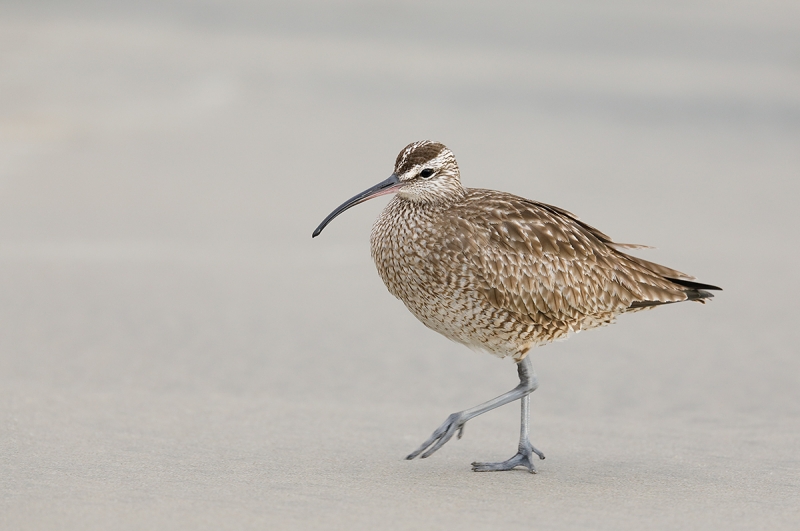
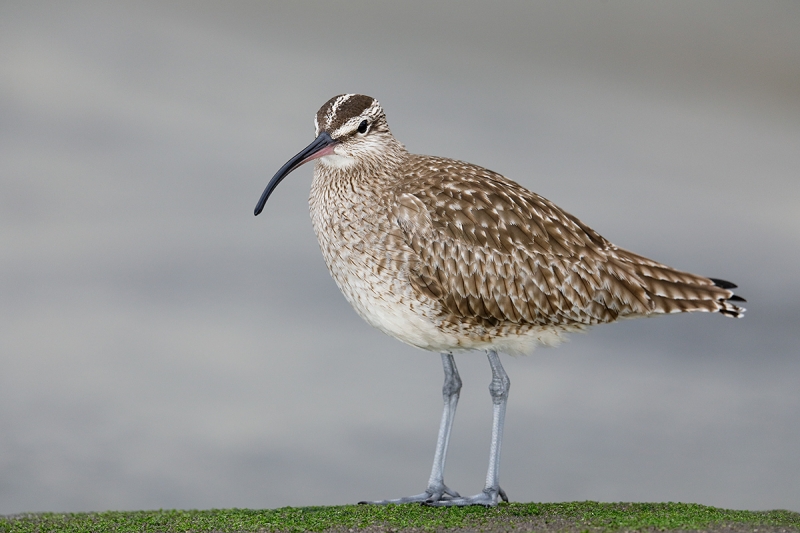
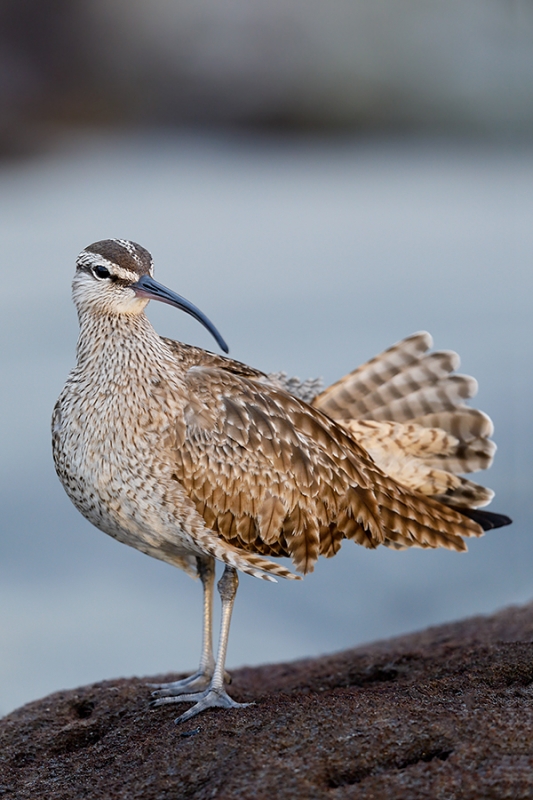
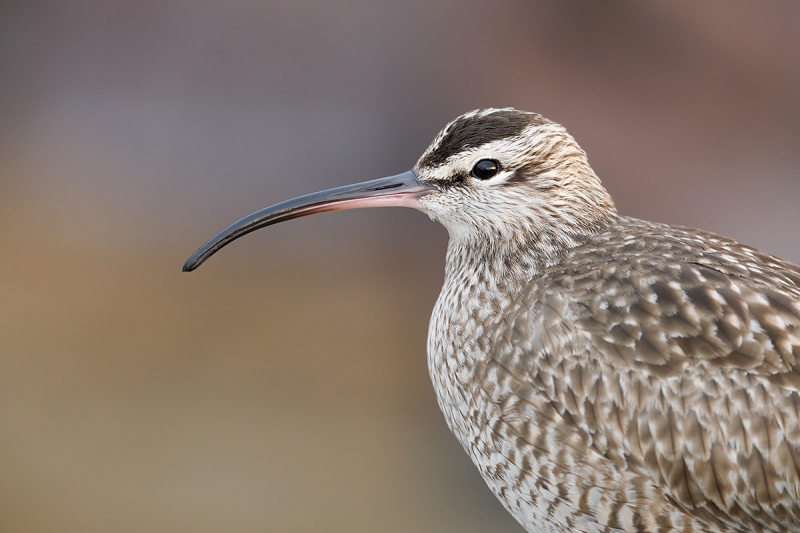
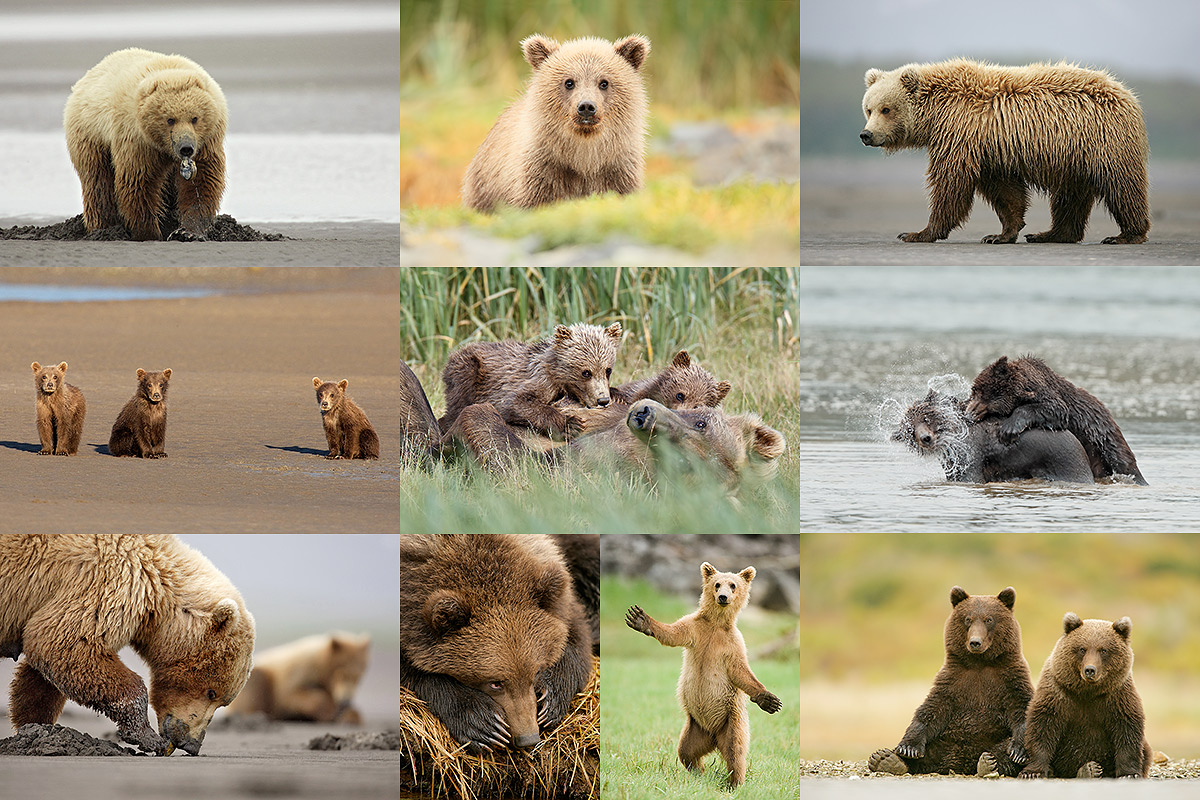













#4 is my choice.
I very much like the head portrait.
David.
All lovely images, but #3 is the sort of one that brings out glee when you check the back of the camera. Surrounded in a beautiful soft blue background, head turned enough to give a full view of face and eye, sharp enough with depth of field where it counts, and the bill tip just misses contact with the back! The fanned tail and unobstructed view of the feet just close this out as a solid keeper.
Those all are fine images, Artie, but I think # 2 is my favorite. I love the pose, the green foreground, the feather detail, and the background. I’m intrigued that everything on the bird is sharp, even though you were using 700 mm and its head and bill weren’t parallel to the sensor’s plane.
I was photographing whimbrels on a beach in Chile last October. Not nearly as nice light and I couldn’t get close enough, but it was fun to see them down there.
I like 1 the best – there is action, just not a nice picture. The simplicity of the background and action in the bird works best for me. 4 to tight. 3 comes second. 2 the green is distracting the eye.
#3 with tail fanned is my favorite. It has action, rarely seen feathers, rarely photoed behavior. And the dark at the top and bottom frame the bird. Love the striped feet too. The little bit of space between the bill tip and the back is a big plus. So is the head turn pointing to the fanned tail– making great composition.
#1 is my second choice with the beautiful almost totally plain background and foreground. The stepping foot gives it action. Great head angle too.
Glad the weather isn’t hindering the SD IPT!
Initially I preferred image #2 rather than #1 by a small margin because the small amount of green seaweed at the bottom of the photo really made the image pop.
But when I saw image #3 with the fanned tail and the angle of the bird’s head – love it!
You can really see so much of the bird in #3, including the striped feet! The framing of the bird, with a bit of blurred dark above, and the rocks below, is wonderful!
All are beautiful shots, but #3 is the winner of the group for me!
My definite favorite is #3, Whimbrel with tail fanned. It’s a great image: love the way the bird has its head turned to the side and the blurred tail feathers showing some movement. Also the way the dark area in the top of the photo brings your eyes back to the bird. This may sound silly but I also actually think the bird has more “expression” or, “presence?” in this photo than in the other three.
Hi Artie,
I like the first one; great position of the bird, head angle, and the raised foot. Also love the light; soft yet bright yet no shadows. The softness of the background and the lack of detail in sand, even exactly where the bird is standing (at least when looking at the smaller image), almost creates a stage where this ballerina is performing. It is a very simple, yet a pretty representation of a Whimbrel in its “environment”.
Frank
1 or 2 for me, can’t decide which! The dark background at the top of image three is distracting for me, despite the beautiful pose of the bird….. without it, it would have been my favourite!
Arthur,
It was a pleasure to meet you Saturday at La Jolla. I’ve always enjoyed your bird photography and like the fact that you share your knowledge with others…..Wish you luck and good health in your future endeavors.
Tom Applegate
Photo 1 is my pick. Clean and simple. I also like the size of the bird in the frame. I hear you about having to shoot tighter to eliminate distractions or garbage in the frame. If you have ever shot at sandy hook in nj avoiding trash in your shots is half the challenge.
No. 2 does it for me with the light on the bird, angle of the head and the fanned tail. The light background behind the bird allows the bird to “pop” out of the image and create depth.
Soooo nice! The smooth OOF backgrounds make for such lovely portraits of these charming birds. A whimbrel on a rock? I’ve never seen that.
I suspect Patrick tamed the birds himself, spending months in a whimbrel costume to blend in, preening, & eating invertebrates from the sand, in order to get better photos when you are in the area. ;7)
Is there a reason that most of your photos do not show much, if any environment? 90% of them give no idea where they were taken. Can’t even tell if they are near the water or not.
What’s the advantage to that approach?
The environment is often cluttered and ugly. I like to feature the beauty and details of the birds in my images. That said, sand beaches are usually near water. The BKGR in the fanned tail image is water. The rocks in images 2 & 3 are part of the bird’s environment. As is the seaweed on the rock in image #2.
That said, when the environment is lovely I strive to include it in my images. When it is cluttered and ugly I strive to eliminate it using a variety of ways.
In short, the advantage of using my style is that the images overall are more beautiful.
a